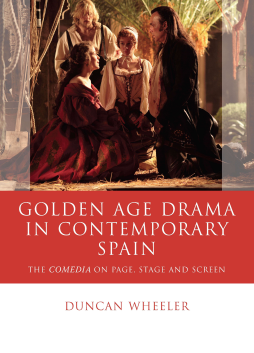
Additional Information
Book Details
Abstract
This is the first monograph on the performance and reception of sixteenth- and seventeenth- century national drama in contemporary Spain, which attempts to remedy the traditional absence of performance-based approaches in Golden Age studies. The book contextualises the socio-historical background to the modern-day performance of the country’s three major Spanish baroque playwrights (Calderón de la Barca, Lope de Vega and Tirso de Molina), whilst also providing detailed aesthetic analyses of individual stage and screen adaptations.
Table of Contents
| Section Title | Page | Action | Price |
|---|---|---|---|
| Cover | 1 | ||
| Title Page | 4 | ||
| Copyright | 5 | ||
| Contents | 6 | ||
| Series Editors' Foreword | 8 | ||
| List of Illustrations | 10 | ||
| Translations of Play Titles | 12 | ||
| List of Abbreviations | 16 | ||
| Acknowledgements | 18 | ||
| Introduction | 22 | ||
| Chapter 1: The performance history of Golden Age drama in Spain (1939–2009) | 38 | ||
| Chapter 2: An (early) modern classic: Fuente Ovejuna in\rcontemporary Spain | 96 | ||
| Chapter 3: Resurrecting lost traditions? Calderón's wife-murder plays and the CNTC | 126 | ||
| Chapter 4: Cinema and Golden Age drama: the comedia goes to the\rmovies | 156 | ||
| Chapter 5: Locating Spanish classical drama in (inter)national contexts: Almagro, the CNTC and the RSC | 210 | ||
| Conclusion | 238 | ||
| Notes | 242 | ||
| Works Cited | 266 | ||
| Index | 306 | ||
| Back Cover | 317 |
